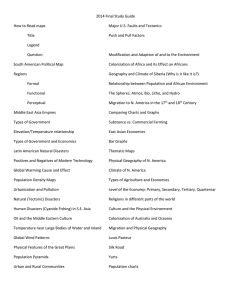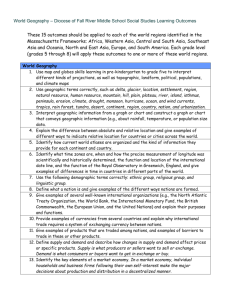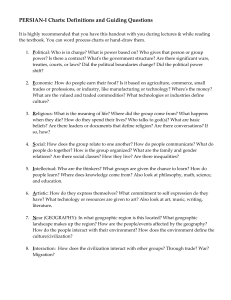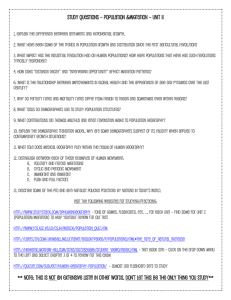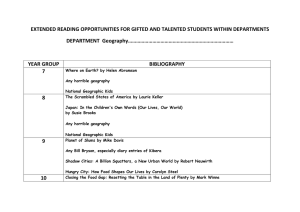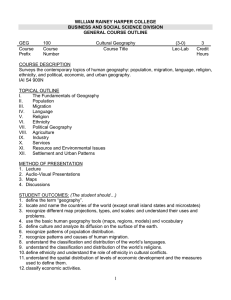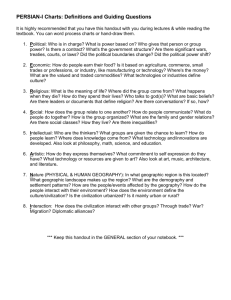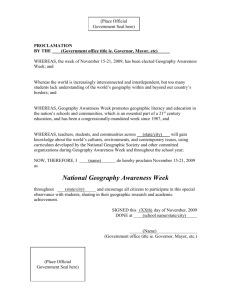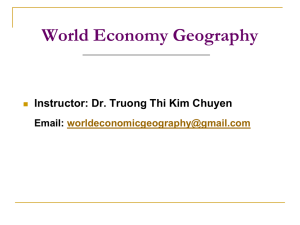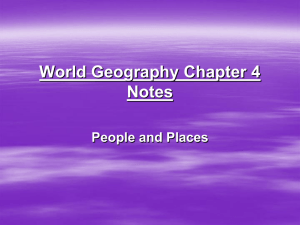AP Human Geography - Boone County Schools
advertisement
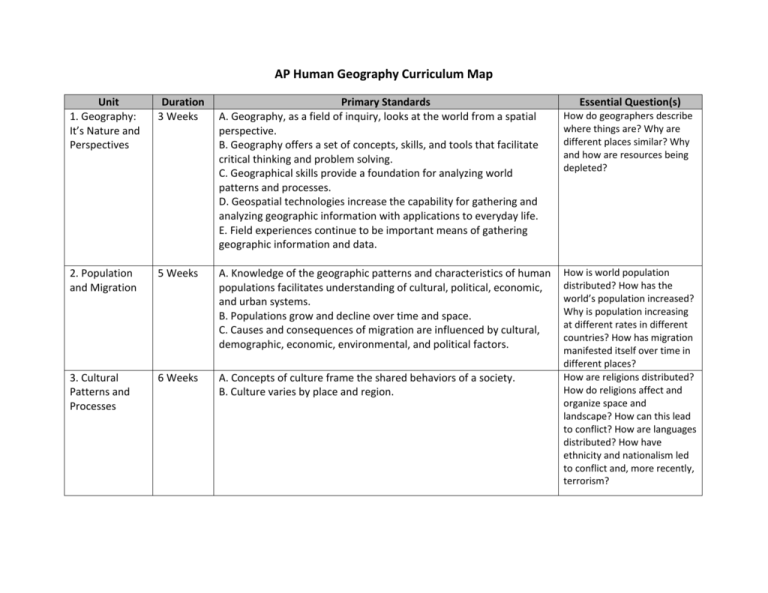
AP Human Geography Curriculum Map Unit 1. Geography: It’s Nature and Perspectives Duration 3 Weeks Primary Standards A. Geography, as a field of inquiry, looks at the world from a spatial perspective. B. Geography offers a set of concepts, skills, and tools that facilitate critical thinking and problem solving. C. Geographical skills provide a foundation for analyzing world patterns and processes. D. Geospatial technologies increase the capability for gathering and analyzing geographic information with applications to everyday life. E. Field experiences continue to be important means of gathering geographic information and data. 2. Population and Migration 5 Weeks A. Knowledge of the geographic patterns and characteristics of human populations facilitates understanding of cultural, political, economic, and urban systems. B. Populations grow and decline over time and space. C. Causes and consequences of migration are influenced by cultural, demographic, economic, environmental, and political factors. 3. Cultural Patterns and Processes 6 Weeks A. Concepts of culture frame the shared behaviors of a society. B. Culture varies by place and region. Essential Question(s) How do geographers describe where things are? Why are different places similar? Why and how are resources being depleted? How is world population distributed? How has the world’s population increased? Why is population increasing at different rates in different countries? How has migration manifested itself over time in different places? How are religions distributed? How do religions affect and organize space and landscape? How can this lead to conflict? How are languages distributed? How have ethnicity and nationalism led to conflict and, more recently, terrorism? 4. Political Organization of Space 2 Weeks A. The contemporary political map has been shaped by the events of the past. B. Spatial political patterns reflect ideas of territoriality and power at a variety of scales. C. The forces of globalization challenge contemporary politicalterritorial arrangements. How and why did states, nations and international organizations develop? How have ethnicity and nationalism led to conflict and, more recently, terrorism? 5. Agriculture, Food Production, and Rural Land Use 3 Weeks How did agriculture originate and diffuse? How and why does agriculture vary from developed to less developed countries? 6. Industrialization and Economic Development 6 Weeks 7. Cities and Urban Land Use 6 Weeks A. The development of agriculture led to widespread alteration of the natural environment. B. Major agricultural regions reflect physical geography and economic forces. C. Settlement patterns and rural land use are reflected in the cultural landscape. D. Changes in food production and consumption present challenges and opportunities. A. The Industrial Revolution, as it diffused from its hearth, facilitated improvements in standards of living. B. Measures of development are used to understand patterns of social and economic differences at a variety of scales. C. Development is a process that varies across space and time. D. Sustainable development is a strategy to address resource depletion and environmental degradation. A. The form, function, and size of urban settlements are constantly changing. B. Models help to understand the distribution and size of cities. C. Models of internal city structure and urban development provide a framework for urban analysis. D. Built landscapes and social space reflect the attitudes and values of a population. E. Urban areas face economic, social, political, cultural, and environmental challenges. How is development measured? How does the level of development vary among regions and countries? How can countries promote development? What activities and problems are associated with the innercity and central business district of a major urban center? What are the causes and consequences of suburbanization? How are different social, economic, and ethnic groups distributed within an urban area?

